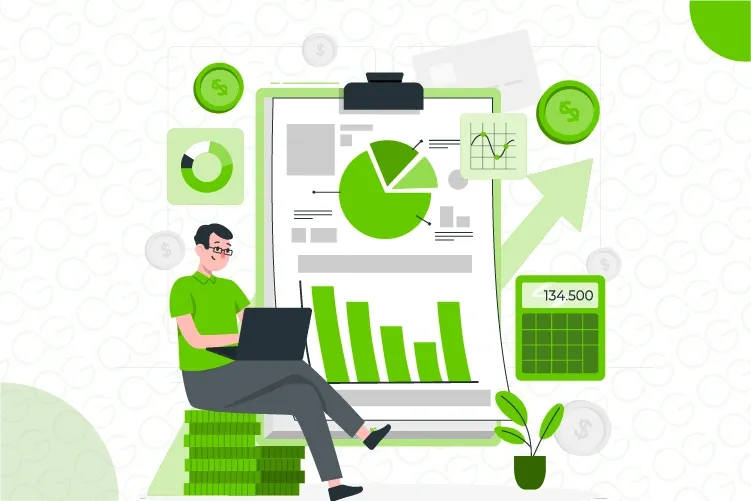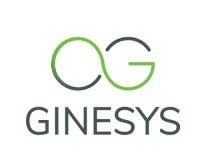Seeing the Story in Your Data: The Importance of Visualization in Retail Business Intelligence

Imagine stepping into your store and instantly uncovering what’s working and what’s not — not through spreadsheets or endless reports, but through a dynamic, real-time narrative that shows what’s thriving, what’s failing, what’s broken, and exactly where your attention is needed. It’s a quick look at your computer, and you know your top-performing SKU, the heat map of customer engagement, and when exactly foot traffic in your store will surge. No guesswork. Just clarity.
This is the potential of data visualization in retail: the missing perspective that transforms raw data into strategic foresight.
Modern retail is awash with data. Every checkout scan, every online click, every loyalty swipe, and every social share pumps more information into your ecosystem. But here’s the problem: most of that data sits unused, locked in silos, unintelligible to the very people who could benefit most.
Retail business intelligence isn’t just about access to data. It’s about the ability to see it. Visualization is the decoder ring — the mechanism that translates complexity into clarity. It bridges strategy and reality. And for retailers today, that’s your new baseline.” This blog will shed light on the many ways enhanced visualization capabilities are improving retail intelligence — from decoding customer behavior to optimizing real-time inventory — and why having that insight might just be your most powerful move yet.

Turn your retail data into a visual command center with Ginesys
From Raw Numbers to Real Insight — A Shift in Mindset
Retailers are drowning in numbers — POS systems track every sale, e-commerce platforms record browsing behaviors, CRM tools monitor customer lifecycles, and social media offers real-time sentiment. There’s no shortage of data. The challenge is transforming it into decisions.
Think about this: you know your average daily sales. But can you instantly identify which products underperformed due to the weather? Or which staff shifts generate the highest upsell conversions? Raw numbers won’t tell you that. Retail data analytics will — but only if visualized effectively.
Insight doesn’t live in rows and columns. It lives in relationships, in outliers, in trends. And to uncover those, you need a new kind of vision — one that’s designed the way the human brain works. MIT studies have found that 90% of the information transmitted to the brain is visual and that we process images 60,000 times faster than text. And that’s precisely why a thoughtfully designed performance dashboard can quickly expose something that a 30-page report may not.
This is where visual analytics in retail becomes transformative. It’s not just prettier charts. It’s strategic pattern recognition. It's what turns a glut of meaningless numbers into real-time, data-driven decisions. In today’s high-velocity markets, intuition alone is a liability. Retailers need tools that surface what matters when it matters.

Unlock clarity from chaos with Ginesys’ smarter data visuals
How Visualization Turns Retail Chaos into Clarity
Retail is a precision game played across thousands of data points: fluctuating inventories, inconsistent supplier timelines, seasonal sales trends, unpredictable return patterns, and varying staff performance. Now, imagine trying to make sense of all that in a spreadsheet. Thousands of rows, static figures, and a mind-numbing scroll.
That’s what decision-making looks like without visualization.
Retail business intelligence transforms chaos into clarity only when paired with intuitive, high-impact data visualization. Think less Excel and more heatmaps. Think static tables replaced with interactive dashboards. This is where visual analytics earns its name: bringing structure to disorder, speed to insights, and intelligence to action.
Look at how different categories of products perform over time. See growth patterns, seasonality, and anomalies with a line chart in seconds. Looking for a way to track customer churn and engagement? A retention cohort visualization paints the picture quicker than any written report. Looking to improve inventory flow? A geo-mapped performance dashboard that follows the flow of inventory at each store location in real-time delivers the right insights.
These are retail BI tools at their best: translating data into direction. From inventory to human capital, these tools clarify what would otherwise be buried in noise. No guesswork, no delay, just data-driven decisions that move the business forward.

The Stories Your Data Wants to Tell
With the right retail analytics tools, even the most silent datasets start telling vivid, actionable stories. Here are just a few that may be unfolding in your business right now—if you know where to look:
- The Bestseller Mirage: Have you ever stopped to think if all the products flying off the shelf might be killing your bottom line through razor-thin margins or a sky-high return rate? With analytics software, a scatter plot showing sales volume against net profit margin or return frequency can reveal this hidden sinkhole. It’s not about what sells fast but about what earns and sticks.
- The Dead Zone Discovery: Walk into a flagship and observe the shining displays. But why is it that the back-left corner always seems so empty? Visual analytics in retail expose these blind spots. Heat maps of foot traffic or click maps on e-commerce sites can indicate where people lose interest. Once those cold zones are identified, you can warm them up with more clever merchandising.
- The Phantom Inventory: Ever experienced a stockout alert, only to see the item listed as available in your system? This is the phantom inventory problem. With the right reporting tools, inventory movement visuals and trend lines don’t just identify the issue—they show when and why it began. Retail data analytics ensure that what’s on paper aligns with what's on shelves.
- The Underrated Staff Star: Data evaluates products and processes and reveals people. Leaderboards and contribution charts built into analytics software can uncover hidden gems on the team. An employee who consistently drives upsells or reins in refunds may not have the flashiest sales numbers but might be the most valuable player.
This is what retail business intelligence really means: gathering the information, understanding it, acting on it, and discovering the stories it’s been trying to tell you all along. When paired with the right BI tools and compelling performance dashboards, these stories educate and motivate action. In the end, every business intelligence system needs more than just data. It needs eyes. And the clearest vision comes from those who see the story, not just the spreadsheet.

Bring your retail data to life with InsightX
How Ginesys is Enabling Retail Visualization
There is a seismic change in how retail works today. Gone are the days when spreadsheets and static reports ruled, and when information was locked up in silos instead of shared widely. That’s where Ginesys One comes into play – as a full retail operating system designed for modern, data-driven brands.
In the massive and often chaotic world of retail, decision-makers face a relentless barrage of questions. Which product lines are not doing well? How is brand loyalty changing in terms of channels? What trends are emerging in specific geographies or periods? Traditional tools rarely offer fast, intuitive answers unlike retail business intelligence powered by Ginesys.
Ginesys One is all about creating an intuitive visual experience. The platforms’ retail BI tools turn numbers into meaning. InsightX, Ginesys’ reporting and dashboard solution, provides retail leaders with intuitive performance dashboards that simplify the clutter. It does this with retail-rich data analytics in which the dashboards flip and turn into easily digestible decision drivers.
Key highlights of Ginesys InsightX:
- Real-time dashboards for sales, inventory, and loyalty analytics
- Custom visualizations across POS, marketplaces, and omnichannel operations
- Mobile-first design for access to data on the move
- AI-powered alerts to track anomalies and outliers
- Integrated with ERP and warehouse systems for complete data context
Consider this: you're running a fashion retail chain across metro and tier-2 cities. Sales at your premium outlets are stagnating. With Ginesys InsightX, you can pull up a real-time view of POS data, overlaid with inventory movement, loyalty redemptions, and online marketplace performance—all in one unified dashboard. No tab-hopping, no manual data stitching. This is data visualization in retail that actually works.
Almost 79% of businesses say that data-driven decision-making is key to competitive advantage (Source: Harvard Business Review, 2024), making the ability to visualize data instantly extremely crucial. Ginesys recognizes this, offering analytics software that is mobile-optimized, cloud-synced, and frictionless. Executives on the go can tap into visual analytics in retail from any device, accessing their KPIs and trends in real time.
But what truly sets Ginesys apart is its "single version of truth" architecture. All data—from POS terminals to ERP, from loyalty engines to e-commerce platforms—flows into a unified platform. This eliminates the chaos of conflicting reports from different teams. What the sales manager sees is what the inventory planner and the CEO see. It’s the difference between reactive correction and proactive strategy.
Some standout benefits of Ginesys One's unified architecture:
- Centralized data governance
- Consistent KPIs across functions
- Reduced reporting time by up to 60%
- Improved cross-functional collaboration and accountability
From heat maps showing regional sales velocity to funnel views of loyalty conversion, Ginesys enables data-driven retail decisions without the guesswork. Its reporting tools are purpose-built to surface insights across the entire retail ecosystem, not just within functional silos.
Retail is no longer just about selling products. It’s about interpreting signals. And Ginesys One ensures that the story your data is trying to tell is not lost in translation. It turns data into a living, breathing narrative—and lets you become the author of your retail success.

Unify your data and visualize your growth with Ginesys
Avoiding Visualization Pitfalls
You’ve invested in retail BI tools. Your dashboards are populated. The charts look sleek. But something feels off. You’re also making data-driven decisions, yet outcomes aren’t aligned. What is going wrong?
It could be your visuals. Visual analytics is more than presenting data; it's about shaping perception. A poorly designed chart can mislead more effectively than raw numbers. In a high-stakes landscape where retailers depend on precise insight to optimize inventory, pricing, and customer experience, visualization mistakes are liabilities.
- Trap 1: Over-Cluttered Dashboards: Imagine walking into a control room with 40 blinking monitors, each screaming for attention. That’s how an overbuilt retail performance dashboard feels. Cramming every KPI into one view doesn’t offer clarity; it overwhelms decision-makers. Analytics software should empower teams to act, not paralyze them with information overload.
- Misleading Chart Types: Not all graphs are created equal. A 3D pie chart might look impressive, but it distorts proportions, making it harder to compare values. The same goes for dual-axis charts with mismatched scales, which can falsely suggest a correlation. In data analytics, clarity beats creativity. Stick to chart types that prioritize accurate interpretation.
- Trap 3: Vanity Metrics Obsession: How do social impressions translate to conversions, customer lifetime value, or store performance? Retail business intelligence should track metrics that inform decisions, not just inflate egos. Good reporting tools focus on actionable insights. Impressions, likes, and bounce rates aren’t useless—but in isolation, they’re just noise.
- Trap 4: Ignoring Contextual Storytelling: Data doesn’t speak for itself. It whispers. Context is what amplifies the message. A 15% sales drop might cause panic—until you see it’s due to a seasonal pattern. Or a surge in returns might seem alarming—until you realize it correlates with a successful buy-one-get-one promotion. Business intelligence demands context, narrative, and nuance.
How do you improve?
Start with ruthless clarity. Every visualization should serve a purpose: to drive a decision. If your visual doesn’t answer a specific question, it probably doesn’t belong on the dashboard. Right data visualization in retail is minimalist. It highlights patterns, outliers, and stories—not decoration.
Next, test your visuals. Show your dashboard to someone unfamiliar with the data. Ask them what they see. If their interpretation matches your intent, you're on track. If not, iterate.
Leverage smart retail BI tools that support intuitive design. Use analytics software with built-in checks for best-practice visualization. Prioritize visual analytics that adapts in real-time to changing business needs.
And above all, never stop asking: what decision will this support? When retail reporting tools are used with precision and purpose, your data is illuminated. And that, ultimately, is what separates information from intelligence.

Looking Ahead — The Future of Visual Retail Intelligence
If the last decade was about collecting retail data, the next will be about making it speak. This is what AI-enhanced dashboards are already starting to offer. Platforms like InsightX are redefining business
intelligence for retail, integrating AI models that adjust data visualizations in real-time based on user behavior, regional trends, and market shifts.
Consider predictive storytelling. It's no longer about reacting to stockouts—it's about forecasting them. "This will be your next out-of-stock" is a conclusion drawn from integrated data analytics, machine learning models, and real-time supply chain feeds. BI tools now embed these narratives directly into dashboards, empowering data-driven retail decisions at the speed of thought.
The future of analytics software hinges on accessibility. Mobile-native visual tools are bridging the gap between corporate HQ and store floors. Whether it’s a store associate reviewing planogram compliance or a VP monitoring same-store sales, retail reporting tools are becoming universal, intuitive, and context-aware.
And then there’s voice-driven intelligence. Executives and managers will soon query their data the way they ask a colleague a question. “Show me the sales trend for Store X last month.” One second later, a line graph with layered filters and benchmarks, all rendered from a business intelligence engine, appears.
What does this mean for modern retail organizations? It means visualization will no longer just describe past events. It will anticipate, recommend, and act. BI tools, powered by increasingly intelligent engines, will not only highlight underperformance but suggest actionable remedies aligned with contextual data. Visual analytics will evolve from dashboards to decision assistants. The final insight? Visualization will do more than just tell stories; it will write the next chapter. And if you’re not already investing in retail analytics software built for this future—then you’re reading yesterday’s script.
Ask yourself: are your dashboards answering the right questions? Are your tools aligned with the complexity of today’s retail landscape? Can your business intelligence tell a story that drives real decisions?
Ginesys believes it should — and can. With cutting-edge retail business intelligence and deeply intuitive data visualization, Ginesys helps retailers turn chaos into clarity, noise into signals and reports into roadmaps. Ready to stop guessing and start knowing? Let Ginesys show you the story your data’s been dying to tell, contact us today.
